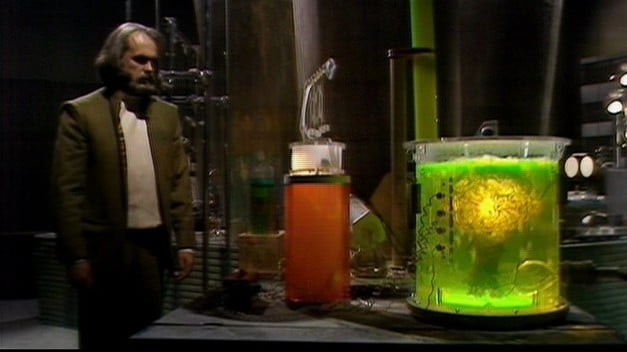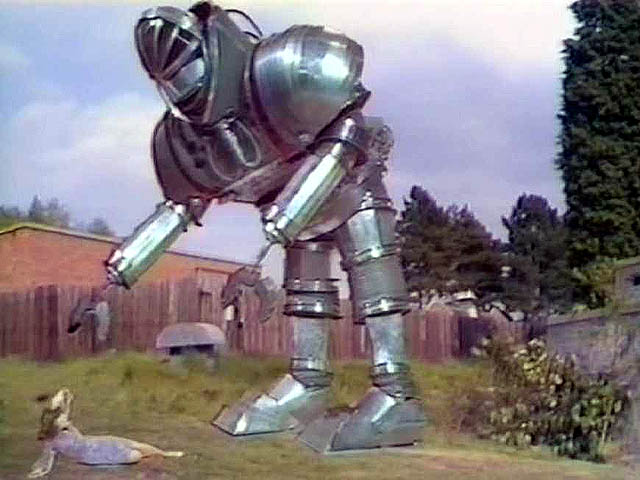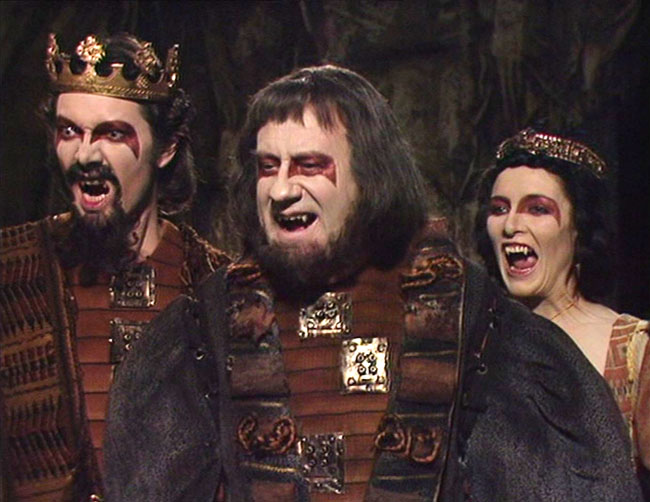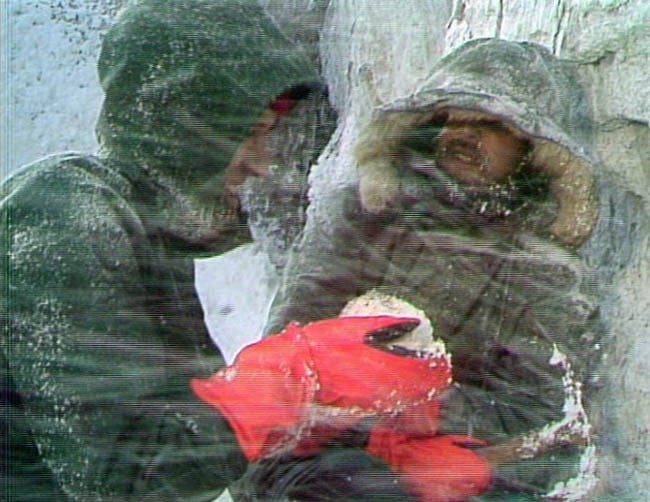This article is more than 1 year old
Doctor Who nicked my plot and all I got was a mention in this lousy feature
How writers plundered sci-fi, literature, films and more
What the Dickens
The Holmes co-written Trial of a Time Lord takes its structure straight from Dickens’ A Christmas Carol. The already mentioned Planet of Evil, though written by Louis Marks, had a large input from Holmes, and Holmes’ work on Terrance Dicks’ script The Brain of Morbius prompted the commissioned writer to demand a pseudonym appear on screen instead of his own, so far had Holmes’ rewrites shifted the story away from the original. Oh, and the name ‘Morbius’ comes (again) from Forbidden Planet of course.

Donovan’s Brain of Morbius
Source: BBC
Dicks’ notion was of a robot struggling and failing to make a new frame for his (almost) disembodied master: not enough spare parts, insufficient understanding of the finer points of human anatomy - none of the Terminator’s “detailed files” here. Holmes, however, decided he wanted the story to be the very Frankenstein rip-off Dicks was so keen to avoid. Frankenstein of the 1930s Universal Pictures films, that is, not Mary Shelley’s gothic original. Philip Madoc’s excellent Mehendri Solon has far more in common with Colin Clive’s Henry Frankenstein than Victor F. And Colin Fay’s Condo is pure Fritz, the character everyone assumes is called ‘Igor’. The story channels Donovan’s Brain too, of course.
Another source, though whether introduced by Holmes or Dicks isn’t known, is H Rider Haggard’s 1886 novel She, in which a sisterhood guarding the secret of immortality, which turns out to be a flame of burning volcanic gas - which is exactly what the Sisterhood of Karn are all about. And there’s no shortage of movie prototypes for the brain-in-a-jar Morbius, of course.
Terrance Dicks might complain about Holmes’ ‘homages’, but he was no stranger to borrowing ideas from great works himself. The case for the prosecution rests on Robot, Tom Baker’s debut story in which a huge athropomorphic machine stumbles around with the Doctor’s journalist companion, Sarah-Jane Smith, in his claws. Experimental Robot K-1 isn’t as sympatico with Sarah as giant ape King Kong is of Fay Wray’s Ann Darrow, but it’s not hard to see how the 1933 movie inspired the 1975 script and some its imagery.

King Kong K-1 and Sarah Fay Wray Jane
Source: BBC
Dicks wrote Robot while he was wrapping up his tenure as the programme’s Script Editor. One of his first editing jobs for then new Doctor Jon Pertwee was Doctor Who and the Silurians, written by Who stalwart Malcolm Hulke and which clearly channels Conan Doyle’s The Lost World and its still-living relics of the Earth’s saurian past into early 1970s Britain and a government-sponsored scheme to drive the nation forward with lashings of low-cost electricity.
Dicks would go on to oversee the Daemons, a story written by his boss, Barry Letts, and which mercilessly plunders Dennis Wheatley stories and the entire canon of British magical and occult thrillers in which diabolic forces manifest themselves in England’s green and pleaseant - and very Middle Class - land. Well, it beats all that guff about colonialism, ecology, miners’ strikes and joining the European Union. Oh and prison reform, though that story, The Mind of Evil, in which The Master builds a telepathic gadget to subdue difficult convicts owes much to Star Trek episode Dagger of the Mind.
In the 1980’s Dicks’ State of Decay raided almost every classic vampire work of the 18th and 19th Centuries, from the black comedy of Varney the Vampyre to the Lesbicious overtones of Joseph Sheridan LeFanu’s novelette, Carmilla: one of the Three Who Rule is called Camilla and she takes a close interest in Time Lady Romana. It’s a cute story, but Dicks’ Horror of Fang Rock is better, though again thanks in part to Robert Holmes’ adjustments.

Fangs for the memory: State of Decay takes a big bite out of the gothic vampire meme
Source: BBC
Other writers could be no less keen to seek out inspiration from sci-fi. John Lucarotti’s script The Ark in Space was later heavilly rewritten by, yes, Robert Holmes. Holmes, however, left in Lucarotti’s notion of aliens penetrating a space station to impregnate sleeping humans. That’s a notion with a very particular SF heritage: AE Van Vogt’s short story Rhapsody in Scarlet, which was later integrated into his novel Voyage of the Space Beagle. In the early 1980s, Van Vogt successfully sued the creators of Alien for pinching his idea. He seems to have never been troubled by The Ark in Space, which, despite its terrible 1970s flared trousers and flared sideburns, is actually rather good.
You can’t quite say the same for Bob Baker and Dave Martin’s The Invisible Enemy, which takes the central premise of the 1966 big-budget film Fantastic Voyage and miniaturises it for injection into the much tinier world of British TV. Doctor Who in the late 1970s lacked the cash to realise the complext interior bioscape of human blood vessels, organs and the lymphatic system, so we had to make do with the alien - and thus unrecognisable - brain of the Doctor. There was no money for a submarine, either. But there is a compensation: Loiuse Jameson is far more fetching in her savage leathers than Raquel Welch in rubber scuba gear.
Alas, the BBC couldn’t afford to shoot Doctor Who in Antarctica - or anywhere else with plenty of real snow - so a jabolite and soap foam-filled quarry had stand in for the South Pole during episodes one and two of Robert Banks Stewart’s 1976 The Seeds of Doom, which is really just The Thing From Another World - hostile vegetable lifeform buried for millenia in the ice, anyone? - given the Doctor Who treatment. The fully formed Krynoid’s attack on the Harrison Chase’s country gaff is surely a steal from The Quatermass Experiment and mutated spaceman Victor Carroon’s dissolution of Westminster Abbey?

A thing from another world: one of the Seeds of Doom
Source: BBC
Speaking of Quatermass, where else did writer Chris Boucher get his notion, used in the excellent Image of the Fendahl, of a once deeply buried skull revealing the real and ineffably ancient origins of the human race other than Quatermass and the Pit? Still, you can forgive the writer of The Face of Evil and The Robots of the Death anything. All three stories are Who gems.
